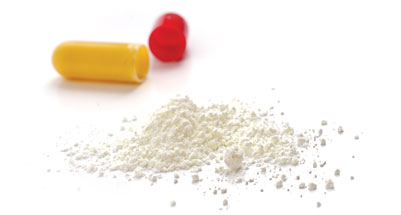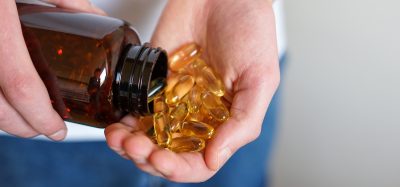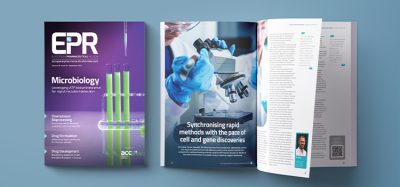Spray drying in the pharmaceutical industry
Spray drying is one of the most remarkable technologies currently to be applied to pharmaceuticals. It is a continuous process that converts, in a single step, a liquid feed into a powder and is an ideal process when precise attributes such as particle size, morphology and stability are required. This review describes the technology, current and future applications and how the present level of understanding and modeling tools enable a process development stage that is both lean and risk-free.
Spray drying is a drying method that was firstly described more than 140 years ago as an improvement in drying and concentrating liquids1. But it was not until the beginning of the 20th century that the level of sophistication and knowledge of the process allowed its industrial use. The production of milk powder was the first commercial application and still remains one of the most important uses of the technology.
Spray drying involves the atomisation of a liquid feed into very small droplets within a hot drying gas leading to flash drying of the droplets into solid particles. The particles are then separated from the drying gas, using a cyclone and/or a filter bag, as a final spraydried product. The feed can be a solution, a suspension or an emulsion and the resulting product can be classified as a powder, granules or agglomerates.
In a single continuous step, spray drying therefore converts a liquid feedstock into a powder with well-defined properties. Properties such as level of moisture or residual solvent in the powder, particle morphology or size and powder density can be manipulated to a great extent to target levels. The remarkable flexibility in tailoring the properties of the final powder, the gentleness of the process and its economics when compared with competing technologies such as freeze drying led to its proliferation in multiple industrial applications including cosmetics, fine chemicals, detergents, polymers, excipients and pharmaceuticals.
The use of spray drying in pharmaceuticals was first explored by Bullock and co-workers in the 1940s and applied to infusions, extracts, inorganic medicinal salts, adrenaline and vitamin C. Many more applications followed, and particularly relevant was the production of pharmaceutical excipients and the isolation of active ingredients that were either thermal-sensitive or difficult to crystallise. Contrary to common perception, spray drying is in fact a very gentle drying method – firstly, the exposure to temperature is limited to seconds or at most a few minutes, and secondly, the cooling effect that results from the evaporation process protects the spray dried materials from the higher bulk temperatures. But despite the multiplicity of uses, it was not until the turn of this century that the use of spray drying in pharmaceutical applications increased significantly.
The key driver for this expansion was the need to formulate oral drugs in the amorphous state as a means to increase the bioavailability of many modern drugs. Due to spray drying’s rapid evaporation process this has become an ideal way to precipitate drugs from solutions in an amorphous state. This formulation platform, known as “amorphous solid dispersions”, is the fastest growing formulation approach to overcome the poor bioavailability of many drugs. Spray Drying and Hot Melt Extrusion are the main manufacturing process to obtain these amorphous materials. Other drivers for the more widespread use of spray drying in the pharmaceutical industry include the production of inhalable drugs such as Pfizer’s Exubera or Mannkind’s Afrezza (both inhaled powder insulin), microcapsules for controlled-release formulations or taste masking and advanced powder forms such as direct compressible and readily wet-able powders. So it is no surprise to see that every two years, or more recently every year, a new chemical entity is formulated using spray drying technology. Some examples of some of these include Cesamet (nabilone, Valeant Pharmaceuticals), Intelence (etravirine, Janssen Therapeutics) and Incivek (telaprevir, Vertex Pharmaceuticals). The enabling features of spray drying are also being applied in the reformulation of existing drugs and for life cycle management purposes.
Equipment types and scales
Spray dryers differ in many different ways: for example, whether or not the drying gas recirculates (close vs. open loop systems), the type of drying gas utilised (air, nitrogen or argon), the type of atomiser or nozzle (pressure, two-fluid, ultrasonic or rotary), the powder recovery system used (often through a cyclone and/or a filter bag), the degree of finishing (namely the level of polish of the internal surfaces), the existence or not of clean-in-place (CIP) or sterilisation-in-place systems as well as the level of instrumentation and automation.
Pharmaceutical spray dryers often combine the highest degree of finishing and the most sophisticated control systems with the simplest hardware designs that provide for easier cleaning. In many cases nitrogen is the preferred drying gas to air, not only because it allows the safe drying of organic solvents but also to reduce oxidation in the product. Pressure and two-fluid nozzles are mostly used in pilot and large scale equipment and their selection often depends on the type of feed and the target particle size of the final product. Rotary nozzles are less often used due to poor cleanability. Very interesting is the use of ultrasonic nozzles in small scale equipment since they allow for the formation of large droplets which very closely resemble those of larger equipment.
For amorphous solid dispersions, close system spray dryers (see Figure 1) using nitrogen as the drying gas are typically used because of the need to handle organic solvents.
Pressure nozzles are also favoured because they result in powders with better flow characteristics (as a result of the narrower particle size distribution), which simplifies the downstream processes of tableting or capsule filling.
Spray dryers in the pharmaceutical industry are available in a wide range of scales: from lab units where a gram or less of final material can be produced, to very large commercial units capable of producing several tons per day (see Figure 2).
Scale-up methodology and process modelling
One particular concern during development of pharmaceutical spray dried materials is the effect of scale-up on critical quality attributes of the product, which may or may not have an impact on the Finished Drug Product. Therefore it is essential that a well-thought-through development strategy is in place as a poorly designed/planned scale-up strategy could lead to considerable losses of very expensive starting materials and can easily jeopardise the timelines of a clinical program. Process modelling and simulation are very powerful development tools to support the scale-up of spray drying processes and to assure that the development time is optimized and the use of expensive Active Pharmaceutical Ingredient (API) materials are minimised. A key simulation model is the thermodynamic evaluation of the spray drying process since it allows mapping out any specific process with minimum or no testing. A thermodynamic model (see Figure 3) provides information about the relationships between drying temperatures, composition and level of saturation of the drying gas, dew points, heat losses and many other parameters as a function, for example, of the target throughput of the process. These are relationships which are then used to define part of the design space of the process.
In order to obtain a full process description, the thermodynamic model needs to be complemented by atomisation and particle formation modelling as well. The atomisation model predicts the droplet size whereas the particle formation model makes inference about the relation between droplet and particle. The former is relatively easy to develop and implement and can make use of mechanistic models or of correlations derived from experimental measurements. The particle formation model is far more complex to derive since it depends greatly on the properties of the material and the best approaches so far rely either on statistical correlations and/or on general trends observed through experimentations. At Hovione, we have observed, for example, that the effect of solids concentration on particle size is much more pronounced in dilute solutions.
A recent development in pharmaceutical spray drying is the ability to obtain powders at milligram or gram scale using lab scale equipment that resemble those from commercial scale spray dryers (see Figure 4). Due to the small volume of the drying chambers, traditional lab scale units used two-fluid nozzles to produce very fine sprays that could be dried within milliseconds. As a result the powders obtained were less than ideal (comprising very fine powders with poor compressibility and flowability) and very different from the powders attainable from larger-scale equipment. More recently, laboratorial scale units were developed using ultrasonic atomisation systems and almost laminar drying gas profiles and these enabled the generation of droplets, and consequently particles, with similar size to those from commercial scale unit (see Figure 4). Such ability removes or reduces considerably the risk associated with the change in powder properties during the scale-up and industrialisation of the process.
Using process understanding for lean and risk-free development
The modelling and simulation tools described above, together with the ability to generate commercial scale-like powders from lab units have reduced considerably the level of experimentation, as well as the quantities of typically very expensive APIs, required to develop a robust commercial spray-drying process. Process understanding and prior knowledge with similar processes are also crucial to minimise testing. Moreover, the description of the process and its design space through meaningful and scale-independent parameters (such as relative saturation of the drying gas and mean droplet size, accurately estimated by modelling tools) facilitates scale-up and can reduce initial experimentation to a handful of lab-scale runs using only a few grams of material.
Today the development of a spray drying process can be accomplished with a fraction of the material that was required 10 years ago and can be done in days instead of months. This is a paradigm shift in spray drying development and one that is being led by the pharmaceutical industry because the quantities of novel drugs are often limited and very expensive to produce.
Future applications for spray drying in pharmaceuticals
Spray drying as an enabling technology for poorly soluble oral drugs is likely to continue to grow as amorphous materials become more established and widely accepted by the industry. However, future and sizable growth is likely to come from its application in biopharmaceuticals such as in the isolation and preparation of peptides, proteins and monoclonal antibodies. The cost and throughput advantage over traditional lyophilisation and the ability to deal with far more complex formulations and solvent systems is likely to drive its gradual introduction in these fields. Aseptic spray dryer is still in the early stage of implementation but robust steps have recently been undertaken in the design of these units as well as in aseptic powder filling, a complementing unit operation. Another area of potential growth is the use of spray drying to produce inhalable drugs; one of the major drawbacks associated with conventional lactose blends is the need to balance adhesive-cohesive forces between the drug and the carrier, with a significant amount of drug not detaching from the lactose and being inevitably deposited in the mouth/throat; spray drying can be used to overcome this challenge by enabling the preparation of composite particles where, via a precise fine-tuning of particle size distribution during development (and tight control during manufacturing), very high and reproducible respirale fractions can be obtained.
Reference
- Percy, S., 1872. Improvement in drying and concentrating liquid substances by atomizing (125406)
Biography
Dr. Filipe Gaspar is a Senior Director at Hovione with responsibility over the Particle Engineering business. His areas of interest include Particle Engineering, Quality by Design (QbD), Industrial Marketing and Business Development.
He led Hovione’s RD Particle Design group until 2012 and was involved in more than 120 projects from preclinical stage to commercial reality. During that period he was the Lead Scientist in four projects that reached commercial stage, including the first at Hovione submitted under QbD.







